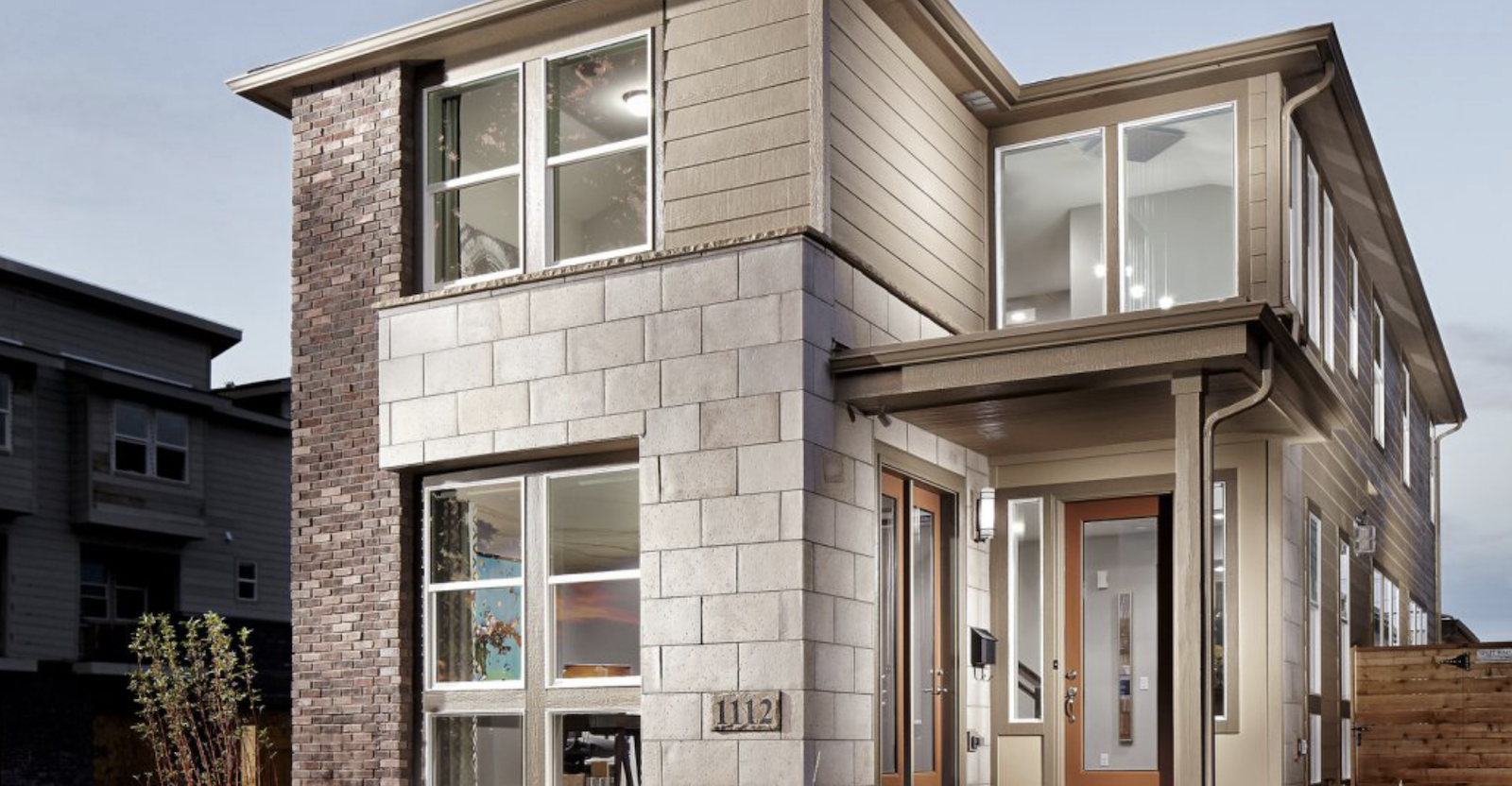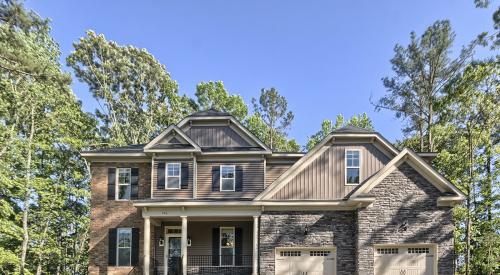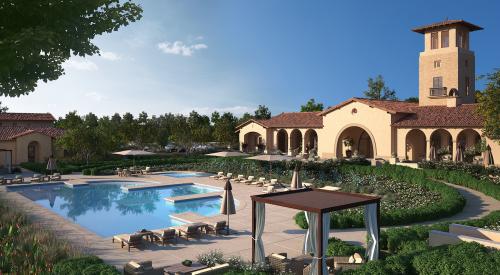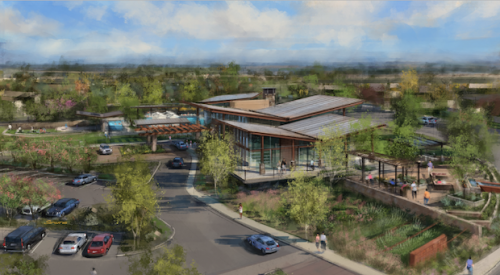A little more than five years ago, TRI Pointe Homes did not exist. Today, after the July 7 completion of its $2.8 billion acquisition of Weyerhaeuser Real Estate Co., the company is among the industry’s largest, placing 13th on the 2014 Professional Builder Housing Giants rankings. At the top of the company, which now consists of six home building brands, including one of the most respected brands in home building, Pardee Homes, sits TRI Pointe CEO Doug Bauer.
In a question-and-answer session with ProBuilder.com following the closing, Bauer said the company is pioneering a third-type of home building operation. While it is a big national, publicly traded company, with easy access to capital markets, it is also more of a federation of strong local brands, which bring all of the advantages of deep market knowledge in some of the strongest housing markets across the U.S., namely Houston, Washington, D.C., Denver, Phoenix, Seattle, Las Vegas, and Southern California.
Another advantage: The former Weyerhaeuser companies will no longer be operated like the in-house REIT it was for many years, with profits moving back to the owner, with little left over to reinvest in local growth. In town hall meetings ahead of the merger’s completion, Bauer told company presidents that selling more homes and creating more cash will be a signal that they need to invest more at a local level.
Here is the interview (edited for length and clarity).
PB: What do you see for your new company?
Doug Bauer: We want to build a third kind of company. This new kind of company is the best of both worlds. We are a publicly traded company that is composed of six regional home building brands in what are arguably the top housing markets in the United States, but now they have the significant financial resources, to get to your question. They are part of a pure-play home building company. They are no longer part of a REIT that is part of a timber company. They have the purchasing clout and we bring the operational sophistication of a public company and a passion to build in local markets. And frankly that is the new model for what I call the next generation of home builder. The regional guys are totally pumped up. When I went around and I did all of the town hall meetings, they were always nervous because the faster that they built homes, and sold and delivered homes and created more cash flow, it went up to Federal Way in Washington and they never saw it again. So I come in and say wait a minute, the faster you do that, the quicker we reinvest. We are going to grow this business. We are not timber guys. We are not wood products guys. We are here to build this business.
The key highlight that you hear about is that we have 30,000 lots between six companies but these people are the key factor in this transaction. They have deep management teams at all levels. They average over 20 years of experience. And they are so pumped up to be a part of a pure play home builder. And that is the secret sauce in this whole deal. Yesterday, we were congratulating each other, the new CEO of Weyerhaeuser, and he is doing the same thing that I am doing. He’s now got a pure-play timber company. And these five home building companies, and with TRI Pointe it is six, are part of a pure-play home builder, so it is a win-win for everybody. And I don’t know if you read the exchange, but it was oversubscribed, so that means it went over pretty well with the investor base. They obviously feel that housing has a lot of legs to stand on.
PB: How is this going to be managed from a regional standpoint? These are also very disparate companies. Do you see any problem with that?
Bauer: That is a positive, actually, having had the experience of running Northern California for Lyon. Northern California is much different from Southern California in the way that we designed product, the way we executed, and even the way land deals worked. It gets back to what you were saying earlier, it is a very local business. Pardee’s structure is probably something that we are going to have to work on. Their framework is a little bit more of a matrix. But we have talked about that. They provide over 16,000 lots just here in Southern California. They have over 3,000 in Northern California. But one of the things that all of the companies do, including Winchester, in D.C. and Virginia, is they typically build a premium brand product that is generally 65 to 70 percent of their product. Pardee though, [also operates] in the Inland Empire corridor—I don’t know if you know those areas – it is a little more of a first-time home buyer, but that is good. It is good to have that kind of opportunistic culture that you can fit different product to different pieces of land. But when you look at Winchester, they are definitely a premium brand. You look at Trendmaker and their ASP is almost $400,000, which is pretty high for Houston. But they are a premium brand in all of the MPCs in Houston. Maracay is positioned in more of the premium markets in Arizona. And Quadrant is doing the same in Washington.
We started the company in 2009 in a pickup truck, but it was actually not like that. But we then grew into this base of capital that we got from Starwood. [Starwood’s] Barry Sternlicht has been a close personal friend for over 20 years. And when we got into [discussing the merger] he actually gave me the best advice. He is very hands off. His only comment to me was: Doug, I am sure the numbers are going to be great but tell me about the people and the culture. So to your point, they are very focused on designing and building a quality product and on focusing on customer satisfaction. If we don’t service the customer, we are out of business. And that is one thing that Pardee and Winchester and all of these companies do very well. What we want to do is harness that energy, harness the synergies within the company and some of the best practices within the company and even further deploy capital to grow their businesses, because the capital has been sucked out of them by Federal Way. That is the way it worked.
PB: Will there be so many synergies that you might have to lose some people?
Bauer: The answer is no. We did lose people at the end of the deal yesterday. There were people up in Federal Way that were kind of the corporate office, and we only took two of them down here. But the other companies are not in any mode of restructuring or laying people off. The name of the game here is that we have had basically 8 months to work on integration and transition. How does a minnow swallow the whale? Well we’ve had eight months to practice. When we closed yesterday, we were actually buying land in Loudon County and in Houston. And that is beautiful because every week we’ve been working on business planning, HR, town halls, IT, Accounting, Finance, Treasury, Legal, so that everybody was in sync when we closed. I am sure we are going to have a misstep here and there.
It was interesting. These companies live on a one-year plan, and all they worked on was how much cash flow they can generate. I said wait a minute guys, if we did this, this and that, what if we redeploy the capital in Virginia. These guys just looked at me and said, that’s a great idea. So we do have very similar cultures. And one of our passions about the business is really encouraging the entrepreneurial spirit that these companies have, and helping them grow. I am going to be the biggest cheerleader.
Unfortunately, and I did this at Lyon back in the early 90s, you get your hands dirty for the first couple of years, but now you come to the size where you become the cheerleader and coach. And we’ve got some great people and they are pretty fired up.
PB: You have 31,000 lots. So much of your decision making about how to use those lots will be driven by when you see the top of the current market. In your opinion, when will this market peak and how does that drive your decisions on land?
Bauer: We debated this a few months ago. The great real estate investor Sternlicht said five years. And I told the board three to five years. But I think we are in for a nice long normal recovery. We talked about some inhibitors like government debt, but we also talked about our very favorable interest rate environment. This business is fueled by job growth, which ultimately generates household formation. Someone asked me about Millennials and I think that this cohort will comprise the biggest part of the housing recovery. Everybody is underestimating the fact that this group needs housing. We have some working for us here. Trust me, they are just getting married later and moving through their careers later. But once they get married in their late 20s and early 30s, they need housing. Too many people are saying this group will be living in townhouses in urban areas, and there are only so many people who can afford those prices. Then they have kids and dogs and you need space and that is why they need housing.
To answer your other question about land. We’ve got six companies here and Pardee has 16,000 lots in Southern California. That is where we are really long on land. The other five companies, including TRI Pointe, their land inventories are three to five years, when I look at what future deliveries are going to do. But all of these companies are out buying land. We are in the business of buying land. What I want to reposition is Pardee. We are no longer part of Weyerhaeuser, so you cannot just go out and buy a 5,000 unit community and sit on it for 20 years. So we are going to take some of these big MPCs, and there are only a couple of them, and we are going to slice and dice those communities to increase volume, but also to look at land and lot sales. That has always been part of the program, but we are going to ramp that up. Having been through two downturns the last thing that I want is to be long in big master planned communities during a downturn that don’t generate any cashflow. Home builders do a great job generating cash flow in a down market as long as you are selling houses. If you are selling land you are screwed, particularly if you have debt. So my job in a macro sense is to move that nine years down to five years of inventory for Pardee. But that means that I am still going to be investing in 100 or 200 unit projects. I was buying land in Houston yesterday. I will be buying land in Vegas tomorrow. And I bought land in Loudon County yesterday. We will continue to focus on land purchases of between 100 and 400 lots so we can continuously put houses on there that are fully entitled. So when you ask that question, it is a little more complicated, because you really have to set Pardee aside. They have a land inventory. It is in our wheelhouse. It is right in our backyard. They have done pretty well as you know. The crown jewel is down in San Diego. It is called Pacific Highlands Ranch. And it is worth a ton of money because they bought it back in 1976. I don’t know if you guys understand, but the nature of this transaction comes over at their book basis. So we’ve got a couple of winners and a couple of dogs and cats. And when you look at a project that you bought in 1976, you can imagine that the margins are pretty damn strong. It is irreplaceable land. We’ve got over 1,300 lots down there. TRI Pointe and Pardee will be building in some of the same communities. We will complement one another in California. We will use that brand extension to take market share in California.













